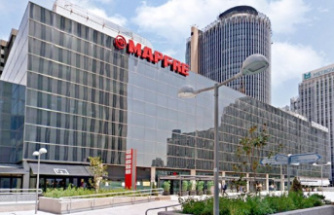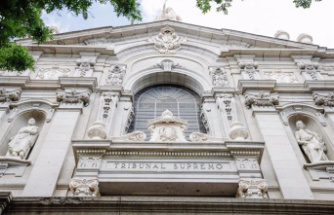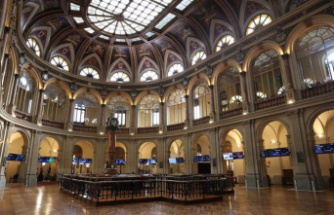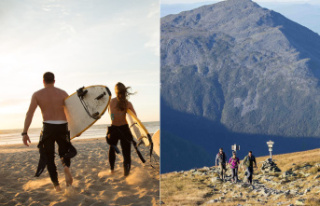If you don't mind, allow me to take you somewhere else. To go beyond the postcard type landscape. To invite you to discover beautiful villages that date back to the origins of our history. To explore these small localities, sometimes known, sometimes unknown, which take us on a journey through time.
• Read also: No rush to the East this year
To select them, I based myself largely on the criteria of the Association of the most beautiful villages of Quebec. These are localities with a good number of buildings representative of our history and well preserved, the whole being as harmonious as possible with the territory.
The villages chosen, which are among the oldest, are therefore mostly found along the waterways that favored colonization, namely the St. Lawrence and the Richelieu. Those located in southern Quebec were formed by the arrival of Loyalists or wealthy American vacationers.
With less than 5000 inhabitants, all these villages are embellished with beautiful landscapes and animated by a culture of their own. For the selection, I also took into account the ease of making a visit with a walking tour or in a historic building.
And since summer is short and you have to take advantage of it to have a good time, I also took into account the attractions and pleasures of the village, whether it be a stop by the water, a country table or meeting a craftsman. You may even be tempted to spend the night or more there.
Good discoveries!
Alain Demers
Foundation or colonization: 1679
Population : 1214
Region: Quebec
Located on the south coast, the village has traditionally been inhabited by generations of sailors from the beginning of New France. The marine cemetery extends to the flats, at the foot of the red-roofed church, almost licked by the high tide. Agricultural, the village is also distinguished by its string of 19th century neoclassical houses.
DISCOVER IT
MAKE A STOP
► www.st-jean.iledorleans.com
► www.tourisme.iledorleans.com
Historian, photographer and author of a book on 100 curiosities of Île d'Orléans, Pierre Lahoud came to settle in Saint-Jean-de-l'Île-d'Orléans in 1975 when fashion was back to earth.
He was 23 when he bought an abandoned house that he literally saved from demolition.
"At the time, I mainly bought a landscape," says the heritage lover who still lives there. I restored it, it took several years of work and it is now a jewel. »
Gems, there are several in his village of about 900 inhabitants marked by the passages of the navigators of the Saint-Laurent who stopped in this village located between the cliff and the river. “The architecture is different from those of the villages of the rest of the island, because several houses were built by them, explains the 70-year-old historian. They built lavish mansions with elaborate ornamentation and facades made up of brick that demonstrated their wealth. Navigators who arrived with empty boats put bricks in them so that the weight made the ship rock. It is with these same bricks that they adorned their houses in Saint-Jean.
"Our village is one of the finest examples of revitalization in Quebec," he continues, referring to the historic site of the Manoir Mauvide-Genest, the marine cemetery, the presbytery, the church, the beadle's house and the stable. forming a perfect example of a seigniorial ensemble.
Pierre Lahoud is also delighted with the involvement of citizens and the arrival of young people bringing a new and stimulating dynamic. "The fact that there is a takeover of the village, I find it beautiful," he said. There is a pride in living in a beautiful environment. »
-Sarah-Emilie Nault
Foundation or colonization: 1750
Population : 1780
Region: Montérégie
The cachet of the village is due to some fifty houses more than a century old, including several along rue du Rivage bordering the Richelieu River. Some buildings arouse curiosity, such as the extravagant Château Saint-Antoine in Moorish style, with turrets and numerous arches. The village also owes its charm to its rural and peaceful character.
DISCOVER IT
MAKE A STOP
► www.saint-antoine-sur-richelieu.ca
► www.tourisme-monteregie.qc.ca
Foundation or colonization: 1897
Population : 681
Region: Eastern Townships
Surrounded by mountains, the village overlooks a vast panorama of Lake Massawippi. From the end of the 19th century, wealthy Americans who came from the south by train discovered the beauty of the place and established sumptuous villas there. From there was born a tradition of vacationing, several residences of the time having become charming inns, restaurants and shops.
DISCOVER IT
MAKE A STOP
► www.northhatley.org
► www.cantonsdelest.com
Foundation or colonization: 1646
Population : 2290
Region: Quebec
On the Chemin du Roy, the two villages now merged occupy more than 20 kilometers of coastline. Cap Lauzon dominates the river. The site is enriched by a remarkable set of traditional stone and wood buildings, several of which are classified as historic. The Catholic heritage is very present there with its churches, cemeteries and Calvaries.
DISCOVER IT
MAKE A STOP
► deschambaault-grondines.com
► tourisme.portneuf.com
Foundation or colonization: 1858
Population : 607
Region: Bas-Saint-Laurent
Renowned for its sunsets, Kamouraska charms us with its village heart of ancestral houses along the coast and its maritime cachet. But there is also the picturesque character of the eel fishing nets anchored on the foreshore, its vast agricultural fields and the scale of the estuary with the mountains of Charlevoix in the background.
DISCOVER IT
MAKE A STOP
► tourismekamouraska.com
► bassaintlaurent.ca
Foundation or colonization: 1684
Population : 4567
Region: Quebec
On the Chemin du Roy, the first road built in New France, the village includes several listed buildings from the 18th century. In the village and historic heart, we discover the borough of Saint-Louis, a district having been so named in 1754. No less than ten places give access to the river. Rue du Quai leads to the marina.
DISCOVER IT
MAKE A STOP
It was a tiny ad seen by chance in the newspaper that changed the lives of Estelle Dumas and Reginald Blanchard forever. By buying an old house in Neuville in 1975, the couple from Saint-Lambert had no idea that they would still be there more than 40 years later.
When they tell the story of their house dating from 1801 and listed as historic, we understand that Estelle Dumas and Reginald Blanchard, both 76 years old, fell madly in love with it as soon as they bought this property on rue Maples. "We wanted to protect her," said the now-retired couple. By visiting the house, we discovered the city, the people around it and the beauty of the place. »
They praise in unison the heritage of Neuville, its 23 heritage houses, several of which are historical monuments, the some 160 century-old houses listed in an important book of the historical society, the landscape as well as the famous canopy of the church donated by Monseigneur de Saint-Vallier.
The preservation of this village with its relief in three levels, too, which has managed to avoid being damaged by developments. The river running along route 138, rue des Érables (the Chemin du Roy from which everyone has a view of the water) and the long agricultural land protecting the east or west entrances to the village.
"We are proud that the village has been preserved," continues the couple, who enjoy swimming there with their grandchildren. There are many preserved buildings and no major developments. The historical society has given importance to the heritage of Neuville (the church, the surrounding environment, the bourg Saint-Louis), and the people are proud of their houses and their beautiful grounds which they take care of. to bloom. »
They also invite people to consult the website of La Société d’histoire de Neuville: https://www.histoireneuville.com/
-Sarah-Emilie Nault
Foundation or colonization: 1713
Population : 1089
Region: Chaudière-Appalaches
Here we are in the land of Corriveau, whose trial and execution sadly marked the first beginnings of justice after the English Conquest. Facing Île d'Orléans and overlooking the St. Lawrence, this peaceful village has kept its charm of yesteryear. Its coastline has several accesses to the river. Thousands of snow geese stop here in October.
DISCOVER IT
MAKE A STOP
► www.stvallierbellechasse.qc.ca
► www.chaudiereappalaches.com
Foundation or colonization: 1806
Population : 1252
Region: Eastern Townships
Neighboring the state of Vermont, this 19th century village arouses wonder with its beautiful, well-preserved Loyalist-influenced houses, made of brick or wood. In the hollow of a valley, the locality is dominated by Mount Pinnacle. Classified as a heritage building, the Freligh mill, a water mill erected in 1839, adds a distinctly picturesque aspect.
DISCOVER IT
MAKE A STOP
► https://frelighsburg.ca/
► www.cantonsdelest.com/
Philippe Choinière and Stacey L'Écuyer are the founders of the Oneka company. Since 2008, they have been creating natural body care products with ingredients sourced from the fields of their Frelighsburg farm. A little piece of paradise from which the family can admire the Adirondacks, Mount Pinnacle and Jay Peak in the distance.
While Philippe grew up in the nearby town of Dunham, he went to school and spent his entire childhood in Frelighsburg, notably in his parents' orchard. The village of his memories became, in 2012, the place of residence of his small family.
The couple of farmer-artisans feel at home in this bustling village of 1,000 inhabitants whose pride lies in the dynamism, agricultural avant-garde and respect for the land.
"Frelighsburg is full of organic market gardeners and people creating the new world," says the 42-year-old. It is a place that meets our values. There is also a good social life, enriching for children, and a closeness between citizens that is difficult to find in a big city. All of this is valuable. »
The hilly landscapes, the architecture with English and Loyalist influences, the flowered houses of which the residents take jealous care and the landscape with extremely rich viewpoints form the beauties of the territory.
The craftsman can practice kayaking in white water close to the house, while the children and the three dogs find a park by opening their door. He sees the village grocery store as a valuable place for social gatherings.
Initiatives like Adélard – a space that promotes encounters between artists and members of the public – are also great benefits for the community. “Art brings many visitors and brings people together. »
-Sarah-Emilie Nault
Foundation or colonization: 1679
Population : 3559
Region: Quebec
Just west of Quebec, Cap-Santé overlooks the north shore of the St. Lawrence. At the heart of the village is the Sainte-Famille church, erected during the French regime, surrounded by an old well, a cemetery and a shady park. On foot, you can discover the Vieux Chemin on the original route of the Chemin du Roy, a narrow street on the edge of the cape lined with magnificent ancestral houses.
DISCOVER IT
MAKE A STOP
► www.capsante.qc.ca
► www.tourisme.portneuf.com
Foundation or colonization: 1679
Population : 1949
Region: Mauricie
Located near Trois-Rivières, the village, one of the oldest in Quebec, includes more than 200 buildings of heritage interest. Classified as a historic monument, the church is a real gem with its stained glass windows, frescoes and paintings from the 17th and 18th centuries. The municipality buried the electrical wires around the site and for half a kilometer along Chemin du Roy, which gives a more beautiful look.
DISCOVER IT
MAKE A STOP
► www.municipalite.champlain.qc.ca
► www.tourismedeschenaux.ca
Foundation or colonization: 1825
Population : 1863
Region: Bas-Saint-Laurent
Attracted by the salt air, the beaches and the sunsets of the coast, wealthy English-speaking bourgeois families began to adopt the place for their summer holidays, from the middle of the 19th century. Plush villas bear witness to this era. Lined with more modest old houses, rue du Quai leads to a small park by the sea.
DISCOVER IT
MAKE A STOP
► www.tourismeriviereduloup.ca
► www.bassaintlaurent.ca
Foundation or colonization: 1859
Population : 1253
Region: Saguenay–Lac-Saint-Jean
It is through hiking and lookouts that we discover the magnitude of the landscape at the heart of which is the village bordered by the Saguenay Fjord. The view from the Mille belvedere was immortalized on $1,000 bills from 1954 to 1992. Unusual attraction in the village: the old bread ovens. Must-sees: the covered bridge and the old quay, which is often bustling.
DISCOVER IT
MAKE A STOP
► https://tourisme.lanse-saint-jean.ca/
► https://tourisme.saguenay.ca/
Foundation or colonization: 1661
Population : 920
Region: Quebec
On the north side of the island, on either side of the riverside road, it is the countryside as far as the eye can see, with its agricultural fields and ancestral dwellings parading before our eyes. There is the largest concentration of stone houses dating from the French Regime. The panorama on the river gives as far as the Côte-de-Beaupré dominated by the Laurentian chain.
DISCOVER IT
MAKE A STOP
► www.ste-famille.iledorleans.com
► www.tourisme.iledorleans.com
Jean-Pierre Turcotte has been mayor of Sainte-Famille since 1985. At 72, the man from this municipality on the northern flank of Île d'Orléans is proudly part of the tenth ("perhaps even eleventh" ) generation of Turcotte of the place.
“I was born in Sainte-Famille in 1950, says the one who was also part of the organization of the Tour de l’île à vélo. We are the oldest village on the island – founded in 1661 – and the parish is the most agricultural in area. I have always loved citizens so I have continued my mandates all these years. »
The orchards and cider factories always attract many visitors during the summer period to this village of 920 inhabitants. The church with three bell towers dating from 1749 is also the “second highest rated church in Quebec”, proudly adds the mayor.
According to him, it is the sunsets that are worth the detour to his village, which, standing on a high plateau, offers a unique view of the river and points towards the Laurentians.
The beautiful houses, the respect for historic architecture and the care that the inhabitants take to maintain their grounds are also the charm of Sainte-Famille. "It's the countryside almost in town, adds the lover of nature, gardening and cycling. There is also the Mitan road which crosses the island which offers splendid landscapes. »
It invites people to stop at the Maison de nos aïeux (where genealogy is done) and at the Parc des Ancêtres, at the more than 100-year-old Blouin bakery, at the Mitan microbrewery and at the Les fromages de l' isle d'Orléans, located on chemin Royal. All planted on an island 65km around the road, which became a heritage site by the government in 1970.
-Sarah-Emilie Nault
Foundation or colonization: 1931
Population : 189
Region: Charlevoix
Schooners at the Maritime Museum recall the important shipyard of yesteryear, which was particularly active between 1860 and 1930. Part of the municipality of Les Éboulements, nestled between the river and the mountains, the village also enjoys a tradition of vacationing, which began in the 1900s. last. Beautiful and large residences bear witness to these eras.
DISCOVER IT
MAKE A STOP
► www.leseboulements.com
► www.tourisme-charlevoix.com
Foundation or colonization: 1875
Population : 2120
Region: Magdalen Islands
The village on the island of the same name captivates with its scattered colorful houses and rolling hills. Unmissable: the heritage site of La Grave with its traditional fishing buildings erected in the 19th and 20th centuries, spread out over an isthmus a few meters wide. The sandy point at the end is one of the most beautiful beaches in the archipelago.
DISCOVER IT
MAKE A STOP
► www.tourismeilesdelamadeleine.com
Foundation or colonization: 1600
Population : 786
Region: North Shore
Located at the confluence of the Saguenay Fjord and the St. Lawrence Estuary, the village overlooks what is recognized as one of the most beautiful bays in the world. Sailboats and boats of all sizes transit there. Dunes and beaches enchant in turn. On the coast, note the famous little chapel, designated the oldest wooden church (1747) in North America, and the iconic Hotel Tadoussac.
DISCOVER IT
MAKE A STOP
► www.tadoussac.com
► www.tourismecote-nord.com
Foundation or colonization: 1740
Population : 2410
Region: Montérégie
Bordered by the bucolic Richelieu River, Saint-Denis-sur-Richelieu reminds us of this famous unique victory of the Patriots against the British army on November 23, 1837. Almost everything reminds us of it, starting with the chemin des Patriotes, the along which stands the National House of the Patriots as well as several other well-preserved ancestral buildings.
DISCOVER IT
MAKE A STOP
► www.stdenissurrichelieu.com
► www.tourisme-monteregie.qc.ca
Foundation or colonization: 1855
Population : 698
Region: Charlevoix
Between the river and the mountains stand modest houses from the past, but also old villas. The picturesque white wooden church and the cemetery with a view of the Saint-Lawrence are to be seen. The sloping farmland, like the beach, is also part of the charm of the village. Recognized for its concerts, the Domaine Forget has a lot to do with the reputation of Saint-Irénée.
DISCOVER IT
MAKE A STOP
► www.saintirenee.ca
► www.tourisme-charlevoix.com
Foundation or colonization: 1860
Population : 3312
Region: Gaspésie
Old fishing buildings, ancestral houses, exceptional maritime panorama, the village overlooking the Rocher Percé charms with its picturesqueness. Behind the Saint-Michel church, a heritage gem in the Byzantine and Romanesque style, trails lead to viewpoints at Mont Sainte-Anne. The suspended glass platform of the Percé Geopark overlooks the village. Offshore, Bonaventure Island, which has become a national park.
DISCOVER IT
MAKE A STOP
► www.perce.info
► www.tourisme-gaspesie.com
Foundation or colonization: 1697
Population : 2258
Region: Quebec
Surrounded by Quebec City, Old Wendake, through certain houses and its church, recalls the alliance of the Huron-Wendats with the French. By their name, the streets of Castor, Turtle and Wolf symbolize the nation's belonging to its culture. A culture shared by shops as well as by the reconstruction of a traditional site and a longhouse.
DISCOVER IT
MAKE A STOP
► www.tourismewendake.ca
► www.hotelpremieresnations.ca
At 30, folk rock musician Sandrine Masse-Savard is proud to return to settle permanently on the Wendake reserve. A place where the Quebec Wendat artist lived between 2014 and 2018 and whose reunion is part of a process of cultural reappropriation.
On L’ours noir, the singer-songwriter’s first mini-album, the piece Wendat Rap addresses the strong sense of belonging to a village and a “tightly woven” family/community felt in Wendake.
“The goal is a little that the Wendats appropriate it, confides the artist born in Montreal and Wendat on the side of his father. I am in the process of relearning the language – with the archives of the Jesuits among others – which unfortunately has practically become a dead language. »
New generation of artists
The young woman missed her village; a village where several members of his extended family live and where there is a beautiful new generation of inspiring artists. “It’s inspiring to work with other Indigenous people,” she continues.
What makes his village of nearly 3,000 inhabitants unique? “This reserve has a cachet, the Wendats are very welcoming people and very good in business too. It is a bit of a tourist village, but it remains authentic. It is also a crossroads of Aboriginal nations where we find an interesting diversity of nations. The beauty lies in the richness of the different cultures found there. »
“The pride of the Wendats and the Aboriginals who have not been listened to for so long, continues the one who likes to recharge her batteries in the forest by walking to the fall of the Saint-Charles River. Yet it is a pride that allows dialogue. »
Old Wendake, the houses typically close to each other, the First Nations hotel where she worked for a long time, the museum, the longhouse in which myths and legends are told and the traditional site at the top of the village are not just a few of Wendake's beauties.
“There are still efforts that are being made – more and more – to safeguard our traditions, she rejoices. Young people are not forgotten and there is a revitalization of the language with initiatives such as the language immersion camp. All this is beautiful to experience and to see! »
-Sarah-Emilie Nault













